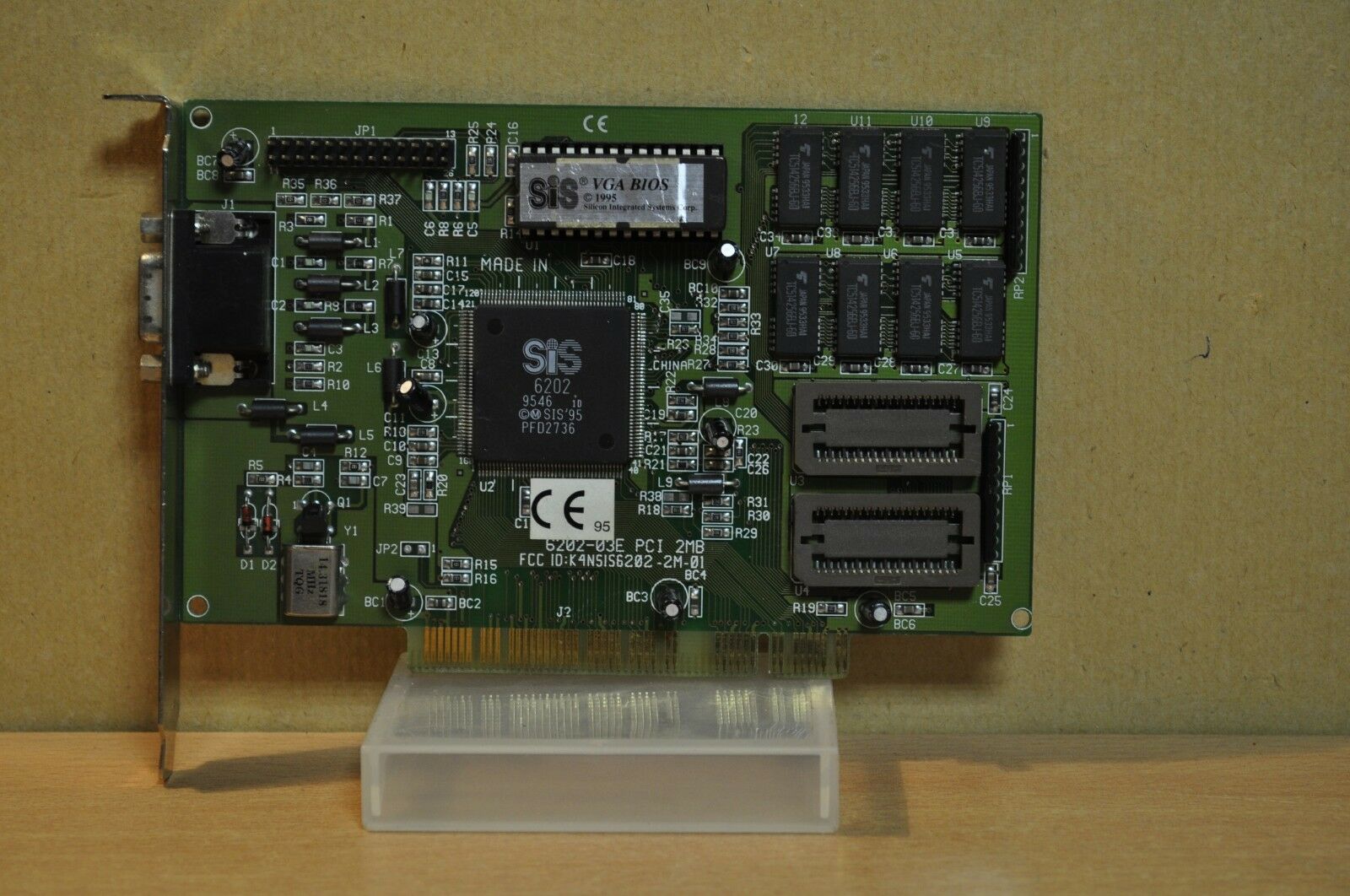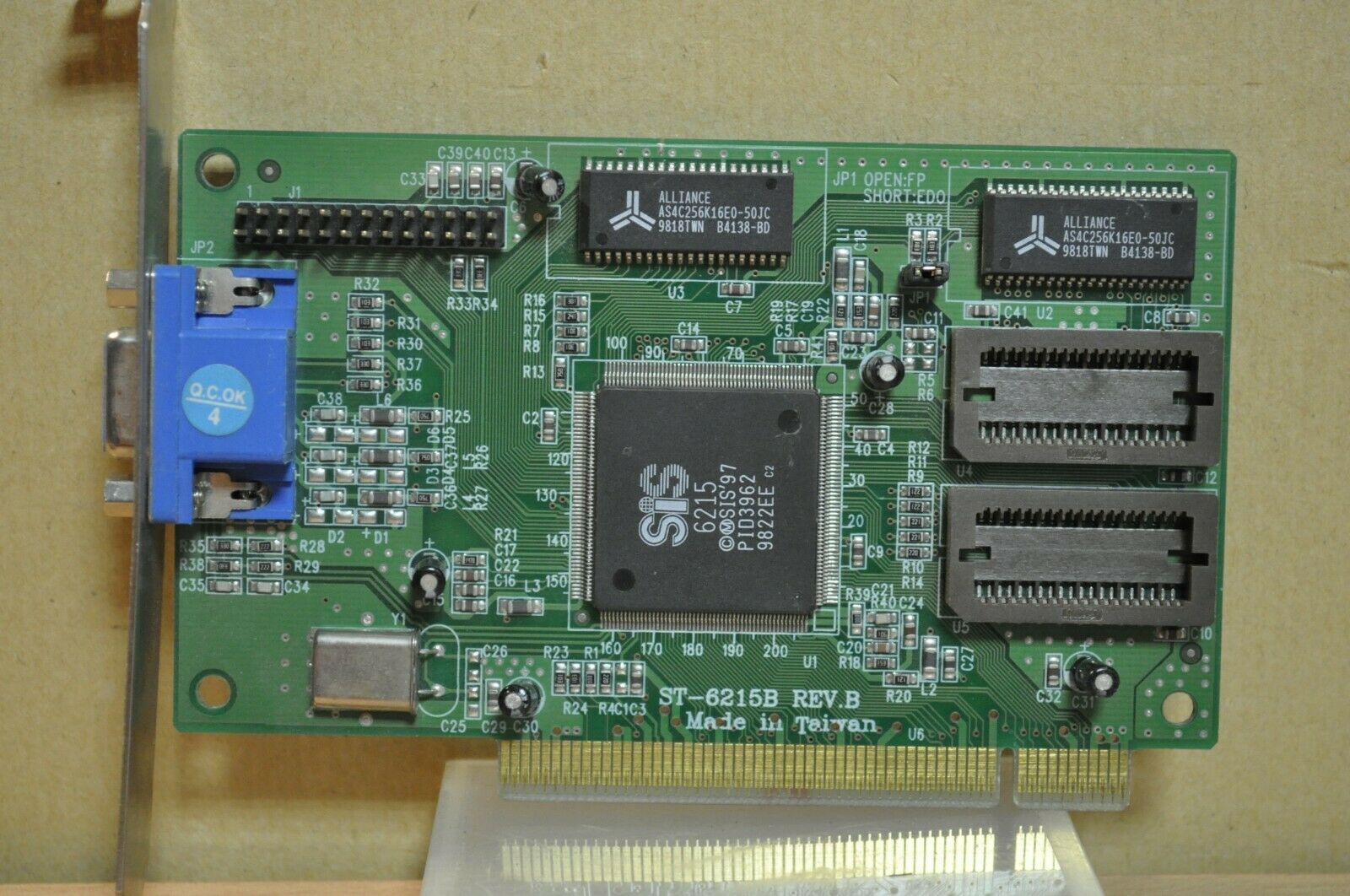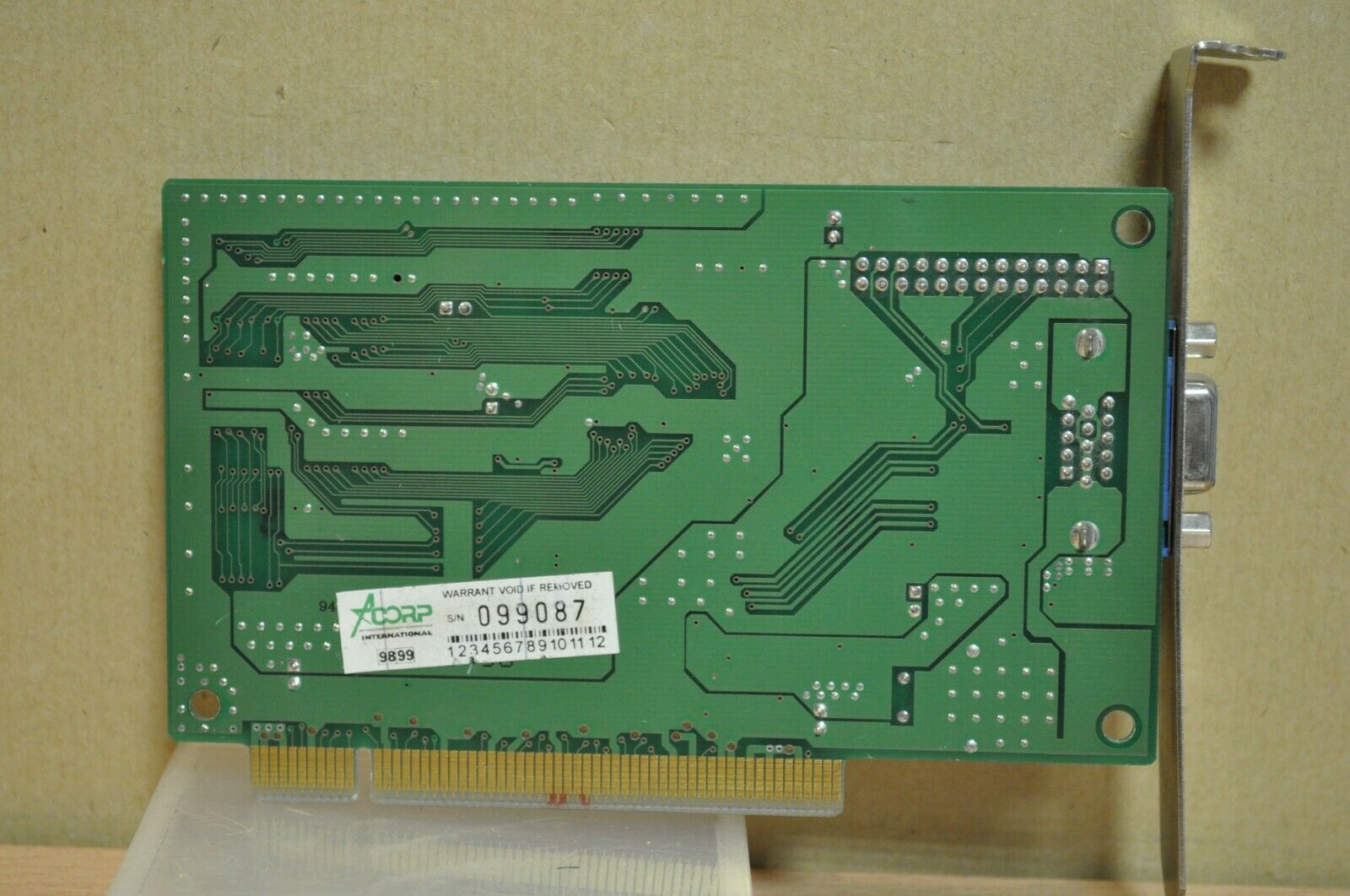SiS
SiS are a motherboard and graphics chipset manufacturer for PC compatibles.
To jump down to their graphics chipsets section, click here.
Motherboard Chipsets
85C310/320/330 "Rabbit"The SiS 85C310 chipset was used in 80386-based systems. It supported interleaved DRAM for faster memory access. |
85C360The SiS 85C360 was an 80386DX single-chip chipset. 85C431 / 85C420 / 85C411 / 85C406 / 85C405The 85C411/406 was an EISA chipset for 386 and 486 motherboards. Award BIOS Chipset code: 154I5 85C460 / 85C461Award BIOS Chipset code: 2C4I7 This is a 386DX and 486 single-chip chipset. Motherboards that use this chipset are: ASUS ISA-486SV2
|
85C471 / 85C471B / 85C471EThis is a 1994 486 chipset that supports level 1 write-back cache (if using a Pentium Overdrive 83). It supports the following CPUs:
Images: Socket 3 VLB Motherboard Click here for the datasheet for the 471. Motherboards known to use this chipset include:
|
|
501/502/503In 1994, the Pentium era had dawned, and the first Intel chipsets to support it like the 430LX were uninspiring and very slow. The SiS 501 by contrast was just about the best chipset on the market. It supported EDO RAM and had a decent integrated single-channel IDE controller. SiS weren't the first to market a non-Intel Pentium chipset - that title went the UMC, but the UMC chipset was a hybrid, and not great. Essentially a 486 chipset with cache and memory controller connected to half the 64-bit processor bus of the Pentium. It's performance was even worse than the Intel 430LX. So if you're looking for a decent early Pentium era chipset, SiS 501/502/503 is the one to have. Motherboards that use this chipset are: Asus PCI/I-P54SP4
|
5511 / 5512Introduced in 1995, SiS 5511 chipset supports Front Side Bus speeds up to 66 MHz. With this chipset you can set the cache to Write-Through (WT, and can cache up to 128 MB of RAM (unheard of in 1995, but for retro fans today this is a nice feature!). This chipset competed against the Intel 430FX, which had a slight edge over the SiS in raw memory performance. The 5511 could run the PCI bus asynchronously from the FSB, so it could remain running at 33 MHz with a boosted FSB.
Supports UMA (shared memory between CPU and VGA controller) with a separate optional SiS 6202 or 6205 VGA chip on the motherboard. It's not a speed demon of a chipset, so look elsewhere if you're after the fastest Socket 7 chipset (check out ALi's Aladdin V or VIA's MVP3 for those). Motherboards that use this chipset are:
|
5571 / 5572 - TrinitySiS Trinity chipset supports Front Side Bus speeds up to 75 MHz. It was a direct competitor to the Intel i430HX chipset.
|
5581 / 5582 - JessieFront Side Bus speeds up to 83 MHz. Motherboards that use this chipset are:
|
5591 / 5595 - DavidFront Side Bus speeds up to 95 MHz. Motherboards that use this chipset are:
|
5596 / 5513 - GenesisFront Side Bus speeds up to 75 MHz. This was basically a 5571 with integrated SiS 6205 VGA controller.
|
5598 / 5597 - JediFront Side Bus speeds up to 75 MHz. Motherboards that use this chipset are: |
530 / 5595Front Side Bus speeds up to 100 MHz. Motherboards that use this chipset are: |
540Front Side Bus speeds up to 100 MHz.
|
Graphics Chipsets
|
|
6326Introduced: June 1997
The 6326 was aimed to be a cost-effective 3D chip for board manufacturers, but still offering a good spec sheet. It had decent MPEG2 hardware decoding, Gouraud shading, bilinear and trilinear filtering, Z-buffering, fogging and more. Sold in large quantities, and with performance only just a bit better than the very poor-performing S3 ViRGE/GX2, and the ATi Rage II+DVD. It had poor quality drivers, a slow core clock which ran at 80 MHz and EDO memory that ran at 50 MHz. No OpenGL driver and support for Direct3D came too late. A DVD version was released that added TV-out and MacroVision encoding/decoding. The SiS 6326 came in a number of revisions (etched on bottom-right row of the chip markings), including C1 (limited to 4 MB of video RAM and has broken perspective correction, does not use system RAM for texturing), and C3 ( limited to 4 MB of video RAM), C5 (can address up to 8 MB of video RAM, fixed perspective issues), D1 and D3 (DVD variants only), and H0. Used on the following cards:
|
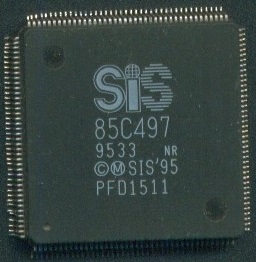
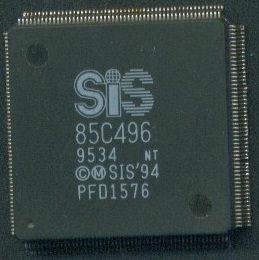 85C496, 85C497
85C496, 85C497